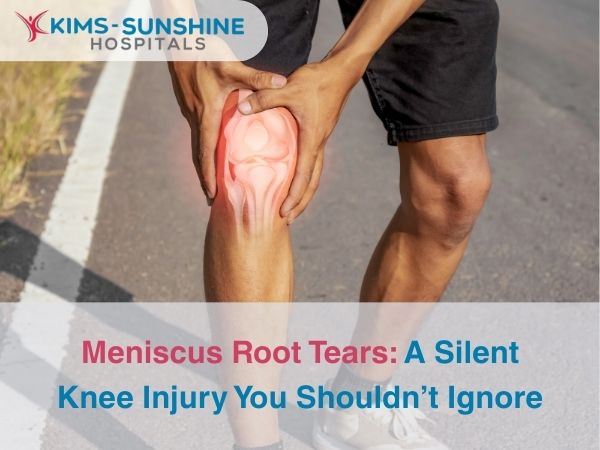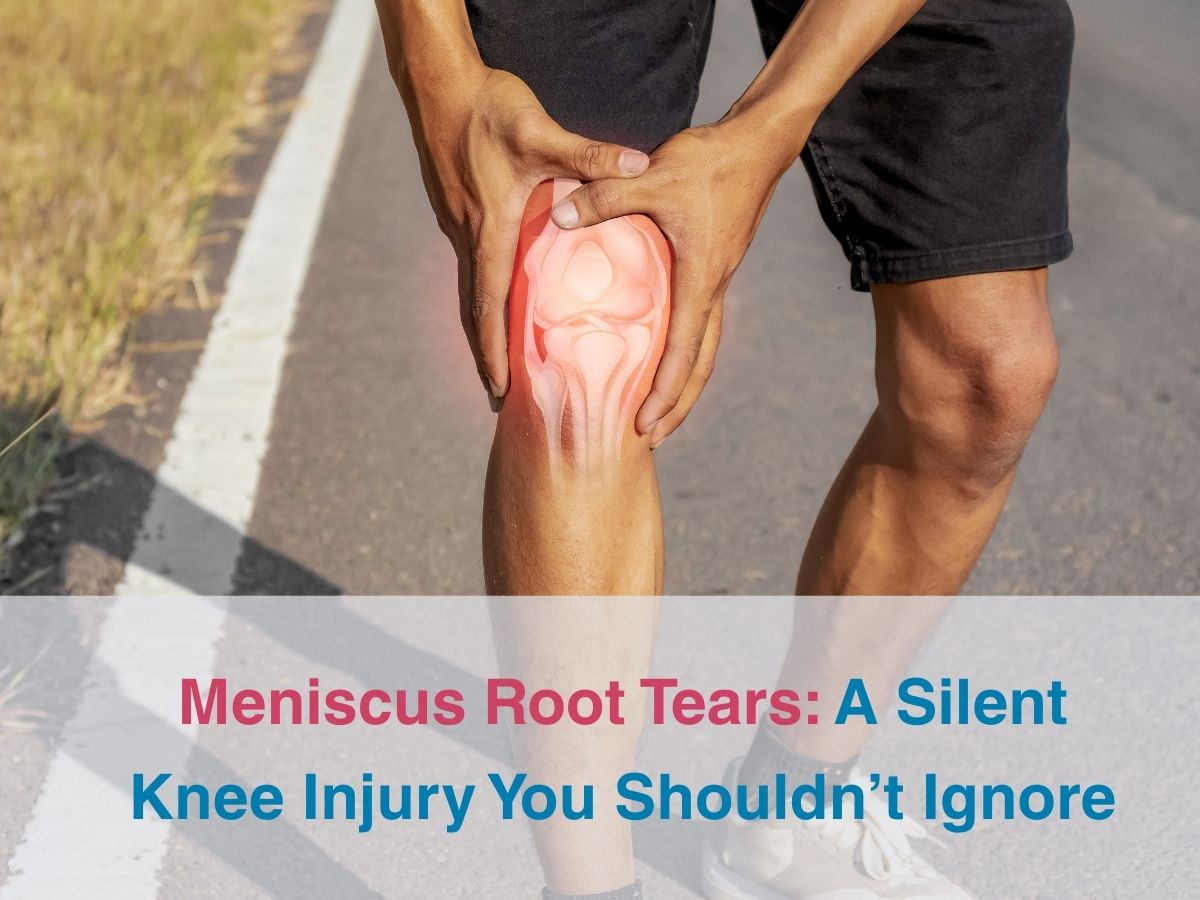
Meniscus Root Tears: A Silent Knee Injury You Shouldn’t Ignore

The meniscus at the knee is a ring of cartilage that helps the bones fit well and move even better. Anatomically, the meniscus is a wedge shaped piece of cartilage that is present between the tibia and the femur (shin bone and thigh bone in common terms). Each knee joint has 2 menici- one on the inside called the medical meniscus and the outer lateral meniscus. These seemingly small pieces of cartilage fulfil many major functions- like shock absorption, protection and lubrication of the bone and joint and in ensuring the maintenance of normal knee movement and mechanics. Meniscus root tears have been called a silent knee injury as they are hard to visualise with normal imaging methods.
Causes of Meniscus Tear
Meniscus tears are normally a result of traumatic injuries or those sustained while playing sports which involve twisting or sudden movements of the knee joint- like pivoting, kneeling, squatting, dodging etc. Heavy lifters are also susceptible to this injury. Advancing age is also another factor as the cartilage loses flexibility, making it more likely to tear due to an injury. Degenerative conditions like osteoarthritis can also contribute to meniscus tears.
Symptoms You Should Not Ignore
Since many studies have shown that it is a silent knee injury, it is very crucial for you to know more about the signs and symptoms- however subtle they may be-
- You may have a popping sensation – when the tear occurred.
- You will probably have some pain.
- Stiffness and swelling of the knee joint can be noted.
- You won’t be able to bend or straighten your leg fully.
If you don’t get diagnosed and begin treatment, or if the tear doesn’t heal, then it will be a chronically painful condition which can negatively impact your daily quality of life.
Meniscus Tear Diagnosis And Treatment In Hyderabad Hospitals
Getting an accurate diagnosis for a torn meniscus is easy at KIMS Sunshine hospital in Hyderabad,as we have radiologists trained to catch subtle findings in your radiology reports. Tests are also done-
- Thessaly and McMurray’s tests are done to check your joint’s range of motion.
- Imaging- MRI is done to get a detailed look at your knee joint and extent of damage caused by the tear.
A knee arthroscopy may be recommended in some cases- where a small incision is made and a very thin tube like camera or arthroscope is sent in. With highly specialized instruments, the tear can then be surgically repaired by using a laparoscopic approach- which means you will have less bleeding and smaller scars to contend with afterwards. You will heal quickly too and can join work sooner too, with such minimally invasive surgery.
Conclusion
Normal treatment for meniscus tears can involve the use of pain killers, using the RICE method and physical therapy- all of which are non-surgical approaches which are pretty effective, if the injury to the meniscus is minor. Advanced meniscus surgery in top hospitals in Hyderabad is done using a laparoscopic, minimally invasive approach. This can greatly improve your prognosis in the long term. Some studies have shown that with surgical removal of the meniscus, you are at a higher risk of developing arthritis in the future, as the shock absorption capabilities of your joint have been changed permanently. But, don’t worry. Call us to set up an appointment with our orthopaedic specialists, so you can get the right diagnosis and timely treatment warranted by this painful condition.






